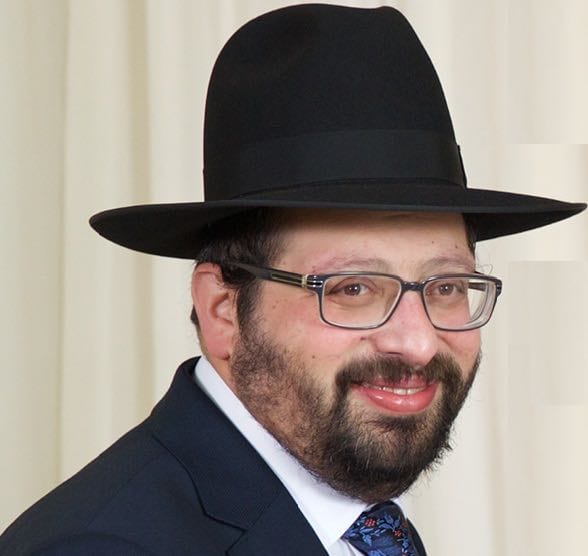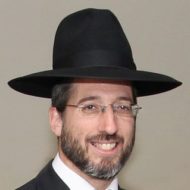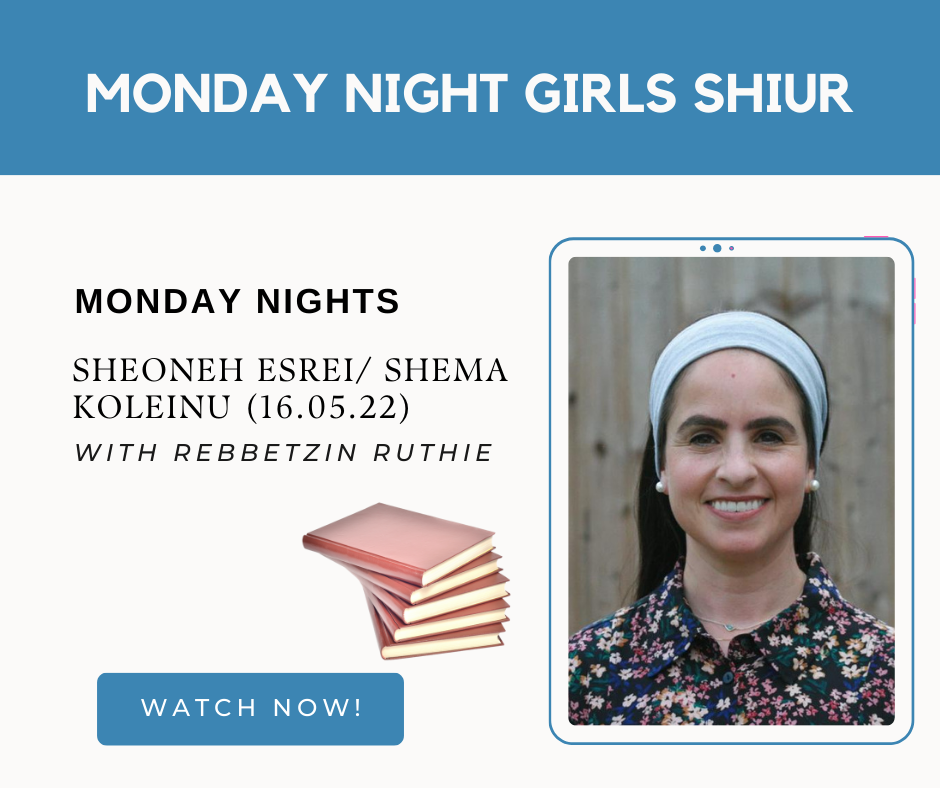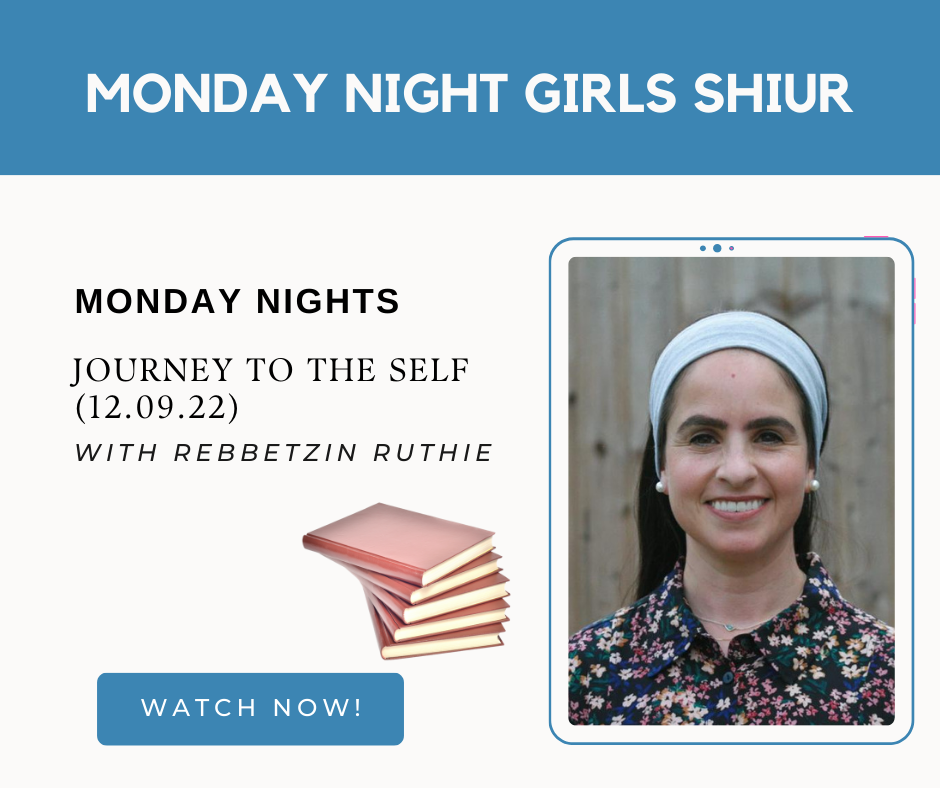
It says in Parshat Pinchos, ‘Bayom Hashemini Atzeret Tiheye Lochem’. Targum Yonason translates this as ‘We should gather ourselves from the Sukah to our homes, besimcha’ – i.e. the essence of the day of Shemini Atzeret is that we are not in the Sukah. What does this mean ?
The first time we find a mention of Sukos and Shemini Atzeret in the Torah is in Sefer Vayikro, Parshat Emor. Although the festivals of Pesach and Shavuot are mentioned in Sefer Shemos where we find ‘Chag Haosif’, – ‘the time we gather in the fruits from the fields’, no mention of Sukos or Shemini Atzeret is made (see Shemot chp 22 v 16 , chp 34 v 22 ). Why is this is so?
The Yom Tov of Sukos was given inorder for us to remember the chesed of HKBH, how He enclosed us with the Clouds of Glory when we left Egypt, a protection from our enemies and elements around. The commentators ask this question – ‘since God took us our of Egypt at Pessach time which took place in the spring, why do we commemorate this chag in the autumn? Would it not be better to remember this chesed by making Sukos for our Seder/ Pessach ?’
The Vilna Gaon in his commentary to Shir Hashirim gives the following answer. When the Jews sinned with the golden calf the Clouds of Glory were taken away from them. Moshe Rabeinu ascended to the heavens firstly to daven for atonement and then to receive the second Luchot. This period ended on Yom Kippur when Moshe descended with the Luchot .
On the following day, in order to prove to the Jews that Hashem had forgiven them, Moshe commanded the Jews to build the Mishkan. For the following two days – the 12th and 13th of Tishrei – the Jews were busy donating the items required to Moshe. On the 14th of Tishrei the Chacham Lev – the builders of the Mishkan – took the gold and other items and on the 15th of Tishrei they started to build it. On that day the Clouds of Glory came back and since the Clouds of Glory came back on the 15th of Tishrei that is why we celebrate Sukos in the autumn and not in the spring .
Rabbi Meir Simcha Hacohen from Dvinisk takes this concept further in his classic sefer, the Meshech Chochmo, in the portion of Mishpatim . He explains that prior to the sin of the the goldern calf, there was no mitzvah of Sukos. There was a Yom Tov of Chag Haosif to give thanks to HKBH for the successful harvest but no mitzvah of Sukos .
This can be explained by examining the cause of the sin of the Calf. Moshe had told the Jews that he would be returning after 40 days. The Jews felt they knew better – Moshe was not coming back thus they felt they needed a new leader – so they went and created the golden calf. They sinned against Moshe and more importantly against HKBH as Moshe’s will was God’s will.
In order to atone for this sin , we were given the commandment of the Poroh Adumah, the Red Heifer, which is a mitzva we can’t understand. King Solomon, the wisest of men said regarding this mitzva ‘It is beyond my understanding…’ therefore when we fulfill the mitzvah of Poroh Adumah we are telling Hashem that although we don’t know what we are doing as we don’t understand this mitzvah, we simply want to fulfill your will unlike by the golden calf where we fulfilled our own will. Hence the Red Heifer comes as an atonement for the calf.
Similarly the mitzva of Sukos was only given after the sin of the golden calf, since previously we had a much closer relationship with HKBH but once we sinned we required a Sukah, which is a resting place for the Shechina. Furthermore by going into a Sukah, a temporary dwelling, a man sees that he’s fragile and needs to come on to HKBH to protect him. Through the Sukah he gains a closeness to Hashem, which is the exact opposite of the sin of the golden calf.
This maybe the intention of the Meshech Chochma, that prior to the sin of the calf there was no need for mitzva of Sukah. Thus the Torah only speaks about Chag Hosif in the book of Shemot as the mitzva of Sukos was only given later on.
Through seven days of sitting in the Sukah, a temporary dwelling- stripped of the luxuries of his house, a person comes to realises that all he owns comes from Hashem, and without Him he is nothing. Once he has internalised this message, the Torah gives us the Yom Tov of Shmini Atzeres, the day we go back into our homes. Explains the Targum Yonason, after internalising this timeless message of leaving our homes and living in the the Sukah, Shmini Atzeret is a Yom Tov of moving back home, carrying the message and mindset of sukah that HKBH is always with us and looking after our best interests.
May we merit speedily to sit in the Sukah of the leviyoson.
Chag Someach







